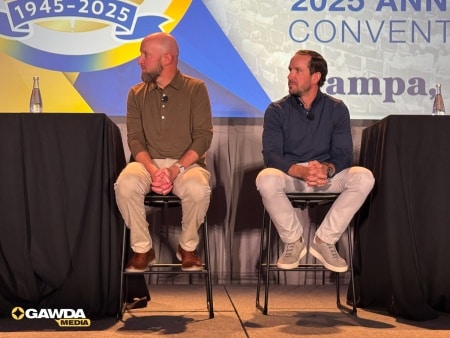Lawsuits Challenge Authority of EPA to Impose Phase 3 GHG Rules for Heavy Duty Truck Engines. An opening brief filed by petitioners with the U.S. Court of Appeals for the District of Columbia Circuit has challenged the authority of the Environmental Protection Agency to impose its Phase 3 Greenhouse Gas rules on manufacturers of heavy duty truck engines. The brief was submitted on behalf of 24 States, a variety of biofuel, natural gas, hydrogen and other energy producers and distributors, and trucking interests, in eight separate cases that have been consolidated in the court of appeals.
The petitioners challenge an April 22, 2024 final rule from EPA that imposes solo greenhouse-gas emission standards for heavy-duty vehicles. Those standards are more stringent than any prior standards and are projected to rapidly increase the production of electric heavy-duty vehicles to 45% of new vehicles in model year 2032. Previously, EPA promulgated greenhouse-gas emission standards for heavy-duty vehicles jointly with the National Highway Traffic Safety Administration and set standards that could be achieved without electric vehicles.
The brief alleges two “keys” to EPA’s effort to “force” electrification of the nation’s heavy-duty vehicle fleet. First, EPA promulgated standards that manufacturers can meet only on a fleet-average basis, rather than an individual-vehicle basis. Second, EPA decreed that in determining a manufacturer’s compliance with the standards, electric vehicles will be treated as producing zero emissions.
Petitioners argue that the de facto mandate for electric vehicles is a “major question” that requires explicit congressional authority under recent decisions from the U.S. Supreme Court. They allege the projected costs to manufacturers alone would be well over $50 billion through 2055, which will be passed on to businesses and consumers.
In addition, they note that EPA projects that its standards will result in a reduction of 135 billion gallons of diesel and gasoline consumption and an increase of 2,300 TWh [terawatt-hours] of electricity consumption through 2055. That forced shift will have significant impacts on the petroleum industry, which supports nearly 11 million U.S. jobs and accounts for approximately 8 percent of U.S. GDP.
Likewise, petitioners argue the rule will affect the biofuel industry and the farmers who support it, as well as gas stations, asphalt and chemical manufacturers, and other industries that rely on petroleum-based products; they will all face equally dramatic declines in demand. Further, petitioners allege EPA’s rule would impose an enormous new strain on the electric grid, as each new charging station with the capacity to charge a fleet of battery-electric long-haul tractors would require enough power for a small town, and the electricity that EPA projects its rule demands through 2055 is enough to power the entire United States for six months.
Further, petitioners argue that rather than authorizing EPA to mandate electric vehicles, Congress is still considering the matter, including by instructing various agencies—though not EPA—to study and report on the implications of electrifying the nation’s vehicle fleet. They also assert that EPA’s rule is also inconsistent with Congress’ broader statutory scheme for addressing vehicle emissions through renewable fuels.
The brief also argues that the EPA rule is arbitrary and capricious because the agency assumes that EVs produce zero emissions. Petitioners allege that EVs generate emissions in multiple ways, including raw-material extraction, production, and disposal of batteries. They also argue that generating grid electricity or making hydrogen produces significant carbon-dioxide emissions.
EPA will now have an opportunity to file a responsive brief, petitioners will file a reply, and the court will then schedule an oral argument before a panel of three judges to hear the matter.
FMCSA Requires States to Use DACH Data on CDL Records. The Federal Motor Carrier Safety Administration published a 2021 final rule directing State Driver Licensing Agencies to access and use violation information obtained through the FMCSA’s Drug and Alcohol Clearinghouse to bar drivers from obtaining CDLs. The rule is going into effect on November 18, 2024.
Specifically, the final rule provides that State Driver Licensing Agencies must not issue, renew, upgrade, or transfer a commercial driver’s license or commercial learner’s permit for any individual prohibited under FMCSA’s regulations from performing safety-sensitive functions, including driving a commercial motor vehicle, due to one or more drug and alcohol program violations.
Further, SDLAs must remove the CLP or CDL privilege from the driver’s license of an individual subject to the CMV driving prohibition, which would result in a downgrade of the license until the driver complies with return-to-duty requirements. This rule also requires States receiving Motor Carrier Safety Assistance Program grant funds to adopt a compatible CMV driving prohibition applicable to CLP and CDL holders who violate FMCSA’s drug and alcohol program requirements and makes clarifying and conforming changes to current regulations.
The FMCSA estimates there are some 177,000 drivers who have drug or alcohol violations registered in the Clearinghouse who will be subject to these adverse actions against their CDLs.




